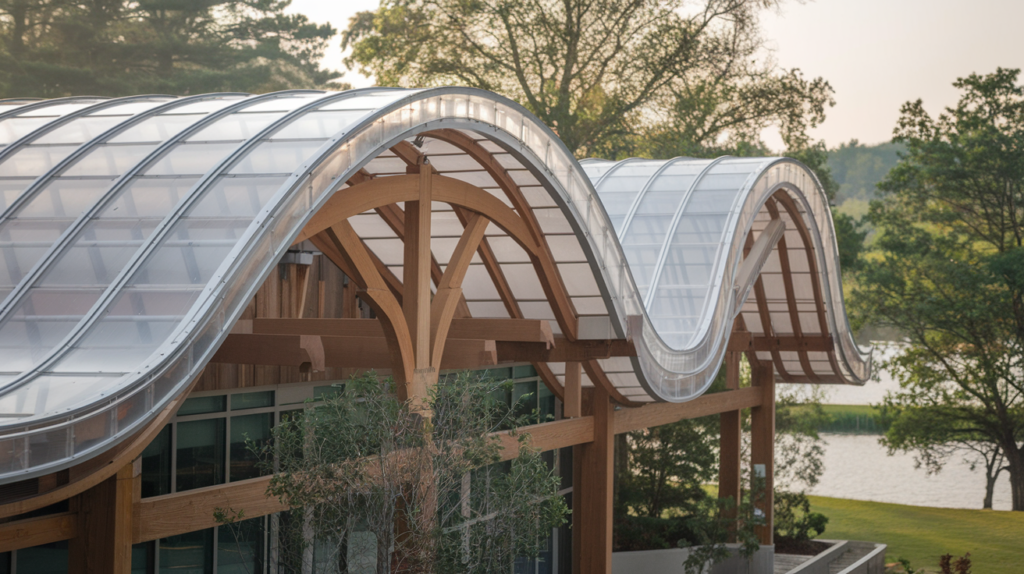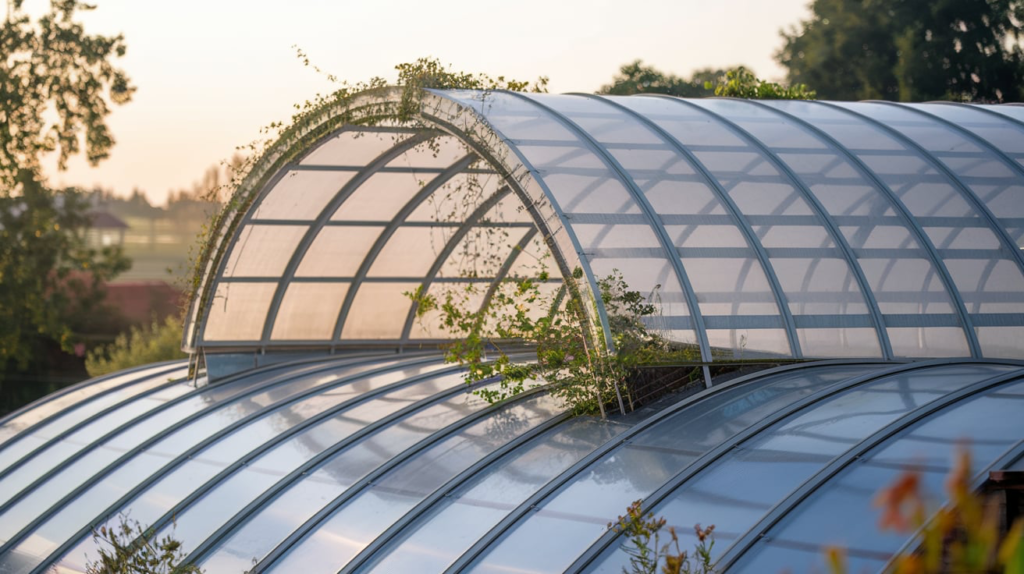Polycarbonate roofing is a popular choice among Filipino homeowners for its lightweight structure, durability, and ability to let in natural light. Commonly used for patios, carports, greenhouses, and even parts of the main house, polycarbonate roofing offers great value for both residential and commercial properties.
Despite its durability, polycarbonate roofing is not indestructible. Over time, exposure to UV rays, heavy rains, and wear and tear can lead to issues like cracks, leaks, or discoloration. Fortunately, most polycarbonate roofing repairs can be done with minimal tools and expertise.
In this guide, we’ll walk you through common problems, repair methods, and maintenance tips to ensure your polycarbonate roof stays in excellent condition.

Common Problems with Polycarbonate Roofing
Here are some typical issues that homeowners encounter with polycarbonate roofs:
1. Cracks or Holes
• Caused by debris impact, extreme weather, or aging material.
2. Water Leaks
• Resulting from loose screws, misaligned panels, or inadequate sealing.
3. Discoloration or Yellowing
• Prolonged UV exposure can cause the polycarbonate to lose its transparency and turn yellow.
4. Scratches or Surface Damage
• Often caused by rough cleaning tools or debris.
5. Loose Panels or Fasteners
• High winds or improper installation can cause panels to shift or detach.
Tools and Materials for Polycarbonate Roofing Repair
Before starting the repair, gather the following tools and materials:
Tools
• Screwdriver or power drill
• Utility knife
• Fine-grit sandpaper
• Ladder or scaffolding
• Soft cloth or sponge
• Safety gear (gloves, goggles, harness)
Materials
• Replacement polycarbonate panels (if needed)
• Roofing screws with rubber washers
• Polycarbonate-compatible sealant
• Adhesive tape for temporary fixes
• Cleaning solution (mild soap and water)
Step-by-Step Guide to Polycarbonate Roofing Repair
Follow these steps to address common polycarbonate roofing issues effectively:
Step 1: Inspect the Roof
• Check for visible cracks, holes, or discolored areas.
• Look for water leaks, especially during or after rainfall.
• Inspect the fasteners and screws to ensure they are tight and secure.
Step 2: Clean the Damaged Area
• Use a soft cloth or sponge with mild soap and water to clean the affected area.
• Avoid abrasive cleaners, which can scratch the polycarbonate surface.
• Allow the area to dry completely before proceeding.
Step 3: Repair Cracks and Small Holes
• For Small Cracks:
• Apply a polycarbonate-compatible sealant along the crack.
• Use a utility knife or putty knife to smooth the sealant for an even finish.
• For Small Holes:
• Place adhesive tape as a temporary fix.
• Apply sealant around the edges of the hole, ensuring complete coverage.
Step 4: Replace Damaged Panels
• If the damage is extensive (large cracks or irreparable holes), replace the affected polycarbonate panel:
• Unscrew the damaged panel carefully.
• Slide out the panel without disturbing adjacent ones.
• Insert the new panel, aligning it properly with the neighboring panels.
• Secure the panel with roofing screws and rubber washers.
Step 5: Tighten Loose Fasteners
• Inspect all screws and fasteners. Tighten any loose ones to prevent water leaks.
• Replace missing or damaged screws with new ones that include rubber washers for a watertight seal.
Step 6: Restore Transparency (Optional)
• Use fine-grit sandpaper to buff out minor scratches on the surface.
• For discolored panels, apply a polycarbonate-safe cleaning solution to restore clarity.
Cost of Polycarbonate Roofing Repairs in the Philippines
Here’s an estimate of the costs involved in repairing polycarbonate roofing:
Sealant for Cracks/Holes: PHP 300 – PHP 700 per tube, suitable for small repairs.
Replacement Panel: PHP 1,000 – PHP 2,500 per panel Depending on thickness and quality.
Roofing Screws (Set): PHP 150 – PHP 500 per pack. Includes rubber washers for sealing.
Professional Inspection: PHP 500 – PHP 1,500 for assessing roof condition.
Note: Prices may vary depending on the location, supplier, and labor costs.
Maintenance Tips for Polycarbonate Roofing
To prevent frequent repairs and prolong the lifespan of your polycarbonate roof, follow these maintenance tips:
1. Clean Regularly
• Remove dirt, leaves, and debris using a soft cloth or sponge with mild soap.
• Avoid abrasive tools that can scratch the surface.
2. Inspect for Damage
• Check for cracks, holes, or leaks at least twice a year, especially after storms.
3. Seal Edges and Seams
• Apply sealant along panel edges and seams to prevent water leaks.
4. Protect Against UV Damage
• Use UV-protected polycarbonate panels or coatings to minimize discoloration.
5. Trim Overhanging Branches
• Prevent branches from scratching or damaging the roof during windy conditions.
6. Avoid Walking on Panels
• Polycarbonate can crack under weight. Use a ladder or scaffolding to access the roof safely.
When to Call a Professional
While minor repairs can be handled DIY, some situations require professional assistance:
• Extensive Damage: Large holes, severe cracks, or multiple damaged panels.
• Structural Issues: If the roof frame is compromised, professional expertise is essential.
• Safety Concerns: High or steep roofs can be dangerous to access without proper equipment.
Why Regular Polycarbonate Roof Maintenance Is Important
Investing in regular maintenance and timely repairs can save you money and extend the lifespan of your roof. Here’s why:
• Prevents Water Damage: Timely sealing of cracks and holes prevents costly water damage to your home.
• Maintains Aesthetic Appeal: Clear and clean polycarbonate panels keep your space bright and attractive.
• Enhances Durability: Regular maintenance ensures your roof performs well during harsh weather.

Conclusion: Keep Your Polycarbonate Roofing in Great Shape
Polycarbonate roofing is a practical and stylish choice for Filipino homes, but like any material, it requires occasional repairs and regular maintenance. By addressing small issues like cracks, holes, or loose fasteners early, you can keep your roof functioning and looking its best for years to come.
To recap:
• Inspect your roof regularly for damage or leaks.
• Use the appropriate tools and materials for effective repairs.
• Replace damaged panels promptly to prevent further issues.
For large-scale repairs or professional assistance, contact our trusted Filipino roofing experts today. Let us help you restore and maintain your polycarbonate roofing with high-quality service and care!
